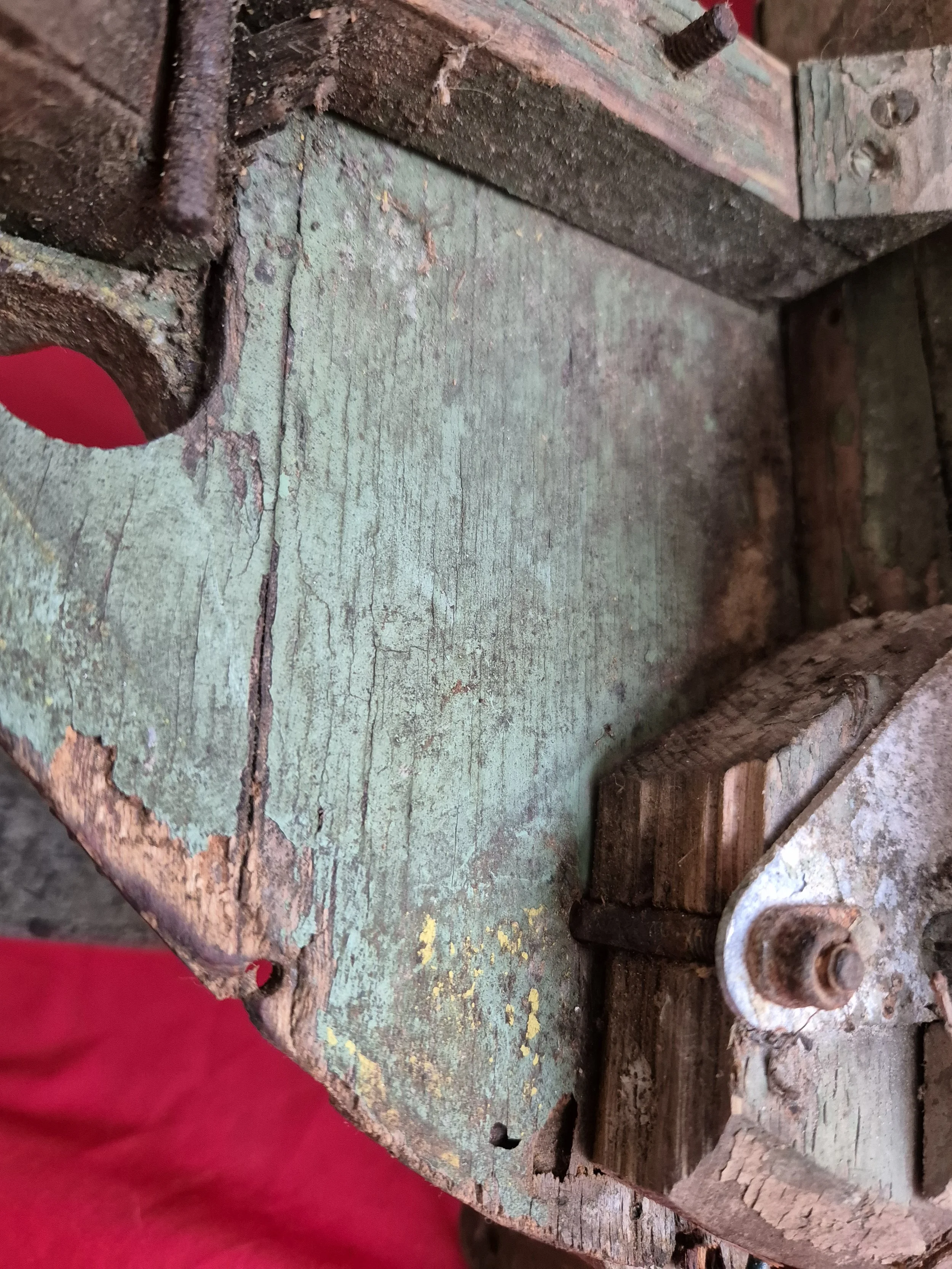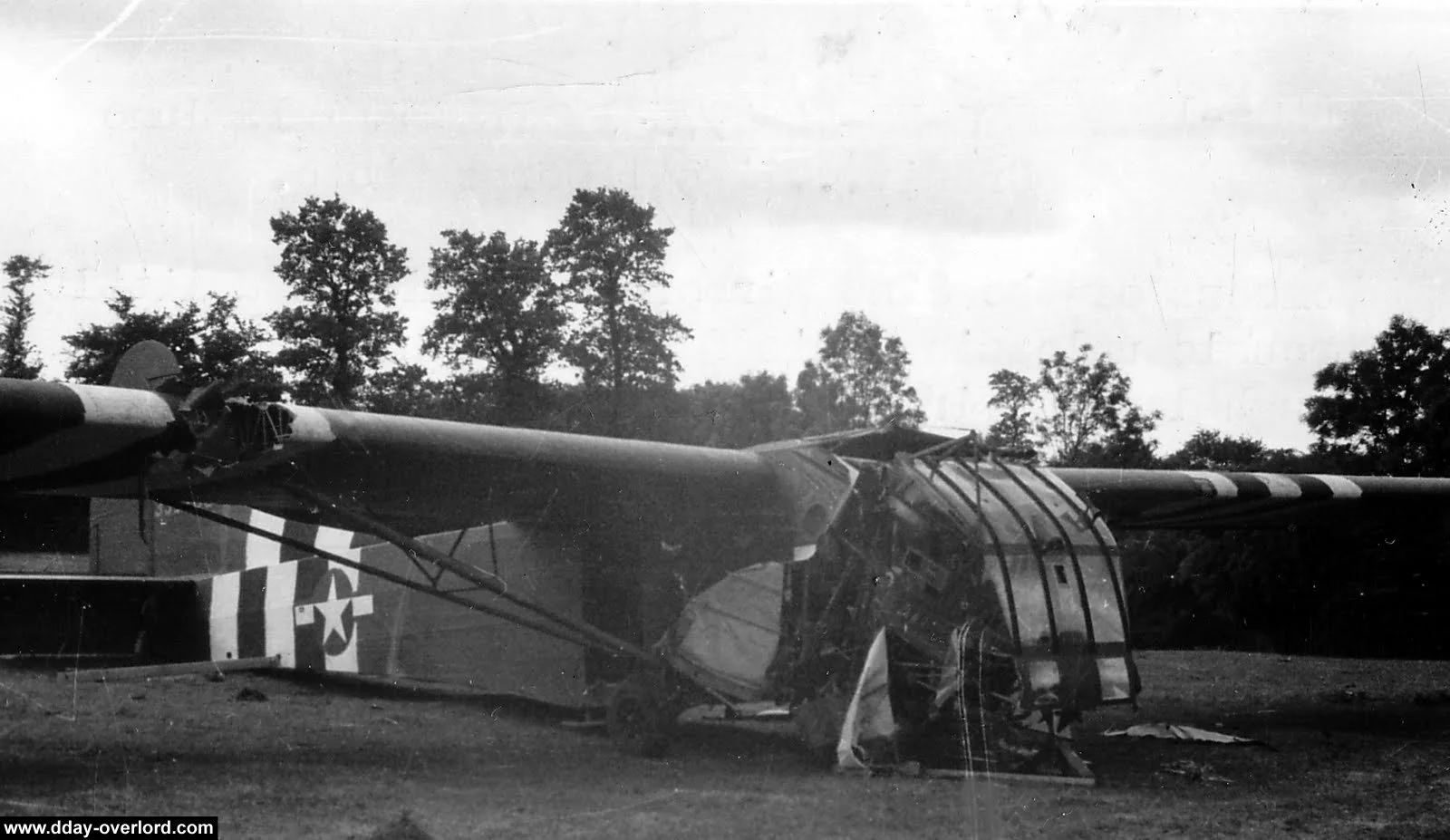 Image 1 of 14
Image 1 of 14

 Image 2 of 14
Image 2 of 14

 Image 3 of 14
Image 3 of 14

 Image 4 of 14
Image 4 of 14

 Image 5 of 14
Image 5 of 14

 Image 6 of 14
Image 6 of 14

 Image 7 of 14
Image 7 of 14

 Image 8 of 14
Image 8 of 14

 Image 9 of 14
Image 9 of 14

 Image 10 of 14
Image 10 of 14

 Image 11 of 14
Image 11 of 14

 Image 12 of 14
Image 12 of 14

 Image 13 of 14
Image 13 of 14

 Image 14 of 14
Image 14 of 14















Incredibly rare huge piece of 1944 D-Day American glider fuselage framework used in Operation Chicago by 101st airborne division early hours of 6th June LZ "E"
1944 D-DAY AMERICAN GLIDER FUSELAGE FRAMEWORK FROM ONE OF THE GLIDERS USED IN OPERATION CHICAGO; GLIDER – BORNE REINFORCEMENT BY THE 101st AIRBORNE DIVISION DURING THE EARLY HOURS OF 6th JUNE.
RECOVERED NEAR THE LANDING ZONE ADJACENT TO HIESVILLE AND KEPT IN A PRIVATE COLLECTION UNTIL JUNE 2023
Fantastic condition huge wood and metal part with loads of original paint! Museum grade item!
Operation Chicago (also known as « mission Chicago ») is the air transport of reinforcements of the 101st Airborne Division using gliders. It is the second part of three successive operations carried out by this division on the Cotentin, the first being operation Albany. The objective of Chicago is to provide reinforcements in men and especially in equipment to the parachuted regiments in order to increase their firepower and their mobility capacity in enemy territory. These means are artillery pieces, light vehicles, radio sets, machine guns, ammunition, explosives
Several units are transported by glider. The most important one is the 81st Airborne Antiaircraft Battalion which occupies 44 Waco with two complete batteries (battery A and battery B). In the 8 other gliders can be find elements of the 101st Signal Company and the 326th Airborne Engineer Battalion, a surgical team of the 326th Airborne Medical Company and the anti-tank section of the 327th Glider Infantry Regiment. In detail, the Waco transport 155 personnel, 25 light vehicles, 16 anti-tank guns of 57 mm, 11 tonnes of various equipment (including a SCR-499 radio) and 2.5 tonnes of ammunition.
Operation Chicago’s landing area (nicknamed LZ « E ») is located on the northwestern outskirts of Hiesville and co-located with the « C » drop zone (the latter being for the 1st and 2nd battalions of the 506th Parachute Infantry Regiment and 3rd Battalion of the 501st Parachute Infantry Regiment). This landing zone has a triangular shape, one kilometre long and one and a half kilometers wide. It is located at the heart of the 101st Airborne Division area of responsibility, which allows the three divisional drop zones to be strengthened in a minimum of time. Unlike the glider landing areas of the 6th Airborne Division northeast of Caen, LZ « E » is very compartmentalized in several orchards and fields bordered by high hedges peculiar to the Norman landscape and by lines of trees reaching up to fifteen meters in height. However, fields in this sector are on average twice as extensive as in the rest of Cotentin Peninsula.
1944 D-DAY AMERICAN GLIDER FUSELAGE FRAMEWORK FROM ONE OF THE GLIDERS USED IN OPERATION CHICAGO; GLIDER – BORNE REINFORCEMENT BY THE 101st AIRBORNE DIVISION DURING THE EARLY HOURS OF 6th JUNE.
RECOVERED NEAR THE LANDING ZONE ADJACENT TO HIESVILLE AND KEPT IN A PRIVATE COLLECTION UNTIL JUNE 2023
Fantastic condition huge wood and metal part with loads of original paint! Museum grade item!
Operation Chicago (also known as « mission Chicago ») is the air transport of reinforcements of the 101st Airborne Division using gliders. It is the second part of three successive operations carried out by this division on the Cotentin, the first being operation Albany. The objective of Chicago is to provide reinforcements in men and especially in equipment to the parachuted regiments in order to increase their firepower and their mobility capacity in enemy territory. These means are artillery pieces, light vehicles, radio sets, machine guns, ammunition, explosives
Several units are transported by glider. The most important one is the 81st Airborne Antiaircraft Battalion which occupies 44 Waco with two complete batteries (battery A and battery B). In the 8 other gliders can be find elements of the 101st Signal Company and the 326th Airborne Engineer Battalion, a surgical team of the 326th Airborne Medical Company and the anti-tank section of the 327th Glider Infantry Regiment. In detail, the Waco transport 155 personnel, 25 light vehicles, 16 anti-tank guns of 57 mm, 11 tonnes of various equipment (including a SCR-499 radio) and 2.5 tonnes of ammunition.
Operation Chicago’s landing area (nicknamed LZ « E ») is located on the northwestern outskirts of Hiesville and co-located with the « C » drop zone (the latter being for the 1st and 2nd battalions of the 506th Parachute Infantry Regiment and 3rd Battalion of the 501st Parachute Infantry Regiment). This landing zone has a triangular shape, one kilometre long and one and a half kilometers wide. It is located at the heart of the 101st Airborne Division area of responsibility, which allows the three divisional drop zones to be strengthened in a minimum of time. Unlike the glider landing areas of the 6th Airborne Division northeast of Caen, LZ « E » is very compartmentalized in several orchards and fields bordered by high hedges peculiar to the Norman landscape and by lines of trees reaching up to fifteen meters in height. However, fields in this sector are on average twice as extensive as in the rest of Cotentin Peninsula.
